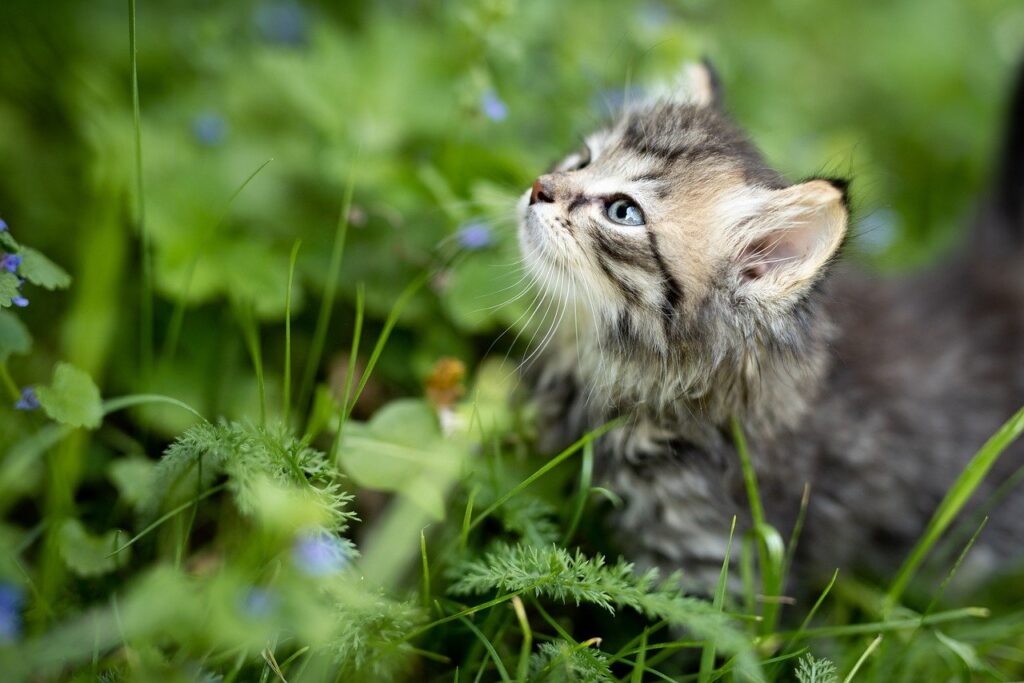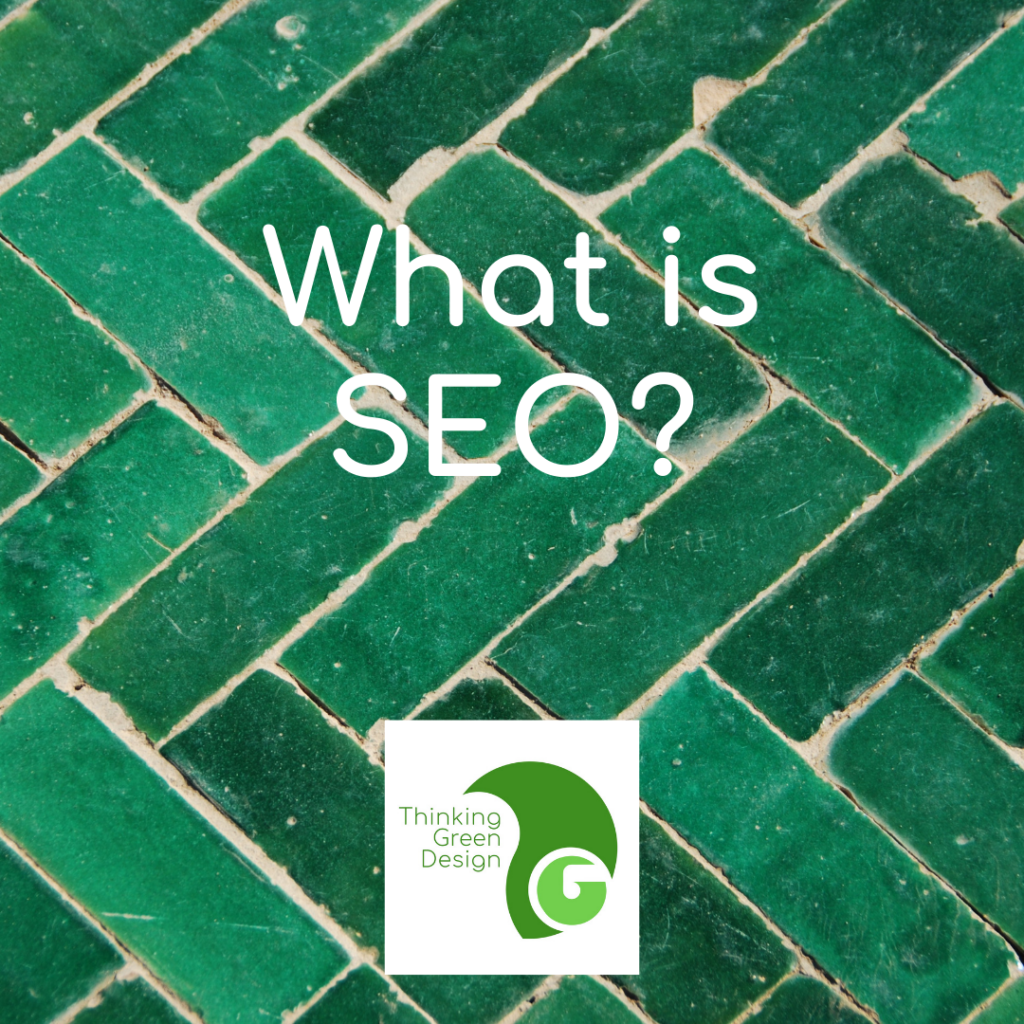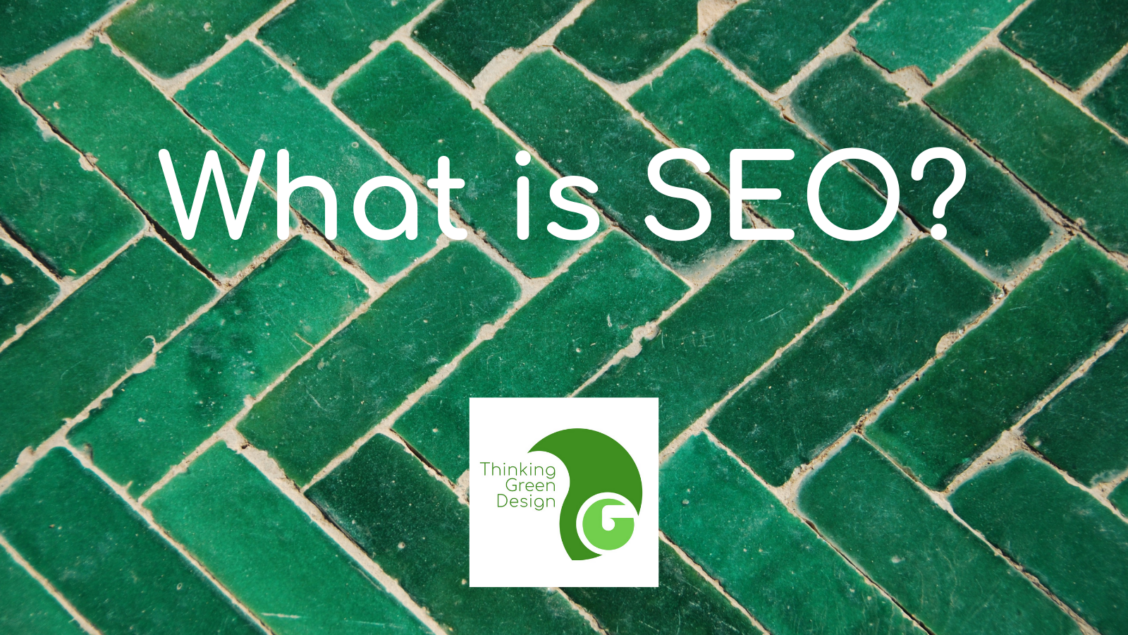SEO is Search Engine Optimisation (or Optimization if you are in America). It isn’t rocket science, it is just about making your words and images easy to find on the internet.
SEO for Images

Let’s pretend that you have a website about your kitten. She is called Sandra and she likes to play in the long grass and chase insects. To make it easier for people to find pictures of Sandra you can do a few things.
Change the file name
Pixabay helpfully named this image “kitten-3669244_1280”. That is so much better than the default numbers or words that your phone or camera will save. If the same image was saved under”WhatsApp Image 2021-04-13 at 17.43.44″ or “2020-10-05 12.35.40” there is no way that anyone searching for Sandra the kitten would find it.
In WordPress it is really easy to change the file name, you simply edit the media. While you are there you can change the title of the image too. You can also generally right click an image name and change it, but remember to leave .png, .gif or .jpeg at the end of it or the computer might not recognise it as an image.
Craft a lovely Alt tag
The Alternative tag/description/attribute is the text description of your image. This is invaluable for people who use text readers as it means they can hear what the image looks like. Alt tags shouldn’t be long but should be descriptive, which is why there is an element of crafting involved.
“Sandra the fluffy stripy kitten looks up from the long grass” would be good here.
Make it the right size
Things change, when I first started writing websites from scratch in the early 2000’s images had to be small because connection to the internet was slow and unsteady. Nowadays images can be a lot bigger but they still don’t need to be print quality. You should be able to change the settings on your phone or camera to reduce the size of your images at source, but don’t do that if you think you will ever need high quality images.
If you have any editing software on your computer look out for the ‘save for web’ or ‘optimize’ settings. There are also a few free sites that will do this for you online.
www.imageoptimizer.net www.adobe.com and kraken.io came up after a quick search for ‘resize images online’. I haven’t tested any of them though. I have tested Canva and you can upload images to drag into templates that are a suitable size for websites and social media.
For a website there will be guidelines – Squarespace for example suggest a size between 1500 and 2500 pixels wide. They have a very useful post about Formatting your images images for display on the web here.
Optimise it
To optimise/ze simply means to make the best of. For website images that means to compress the best quality possible into the smallest amount of space. In Photoshop you can tweak the settings and see what difference compression rates look like. Without Photoshop there are online solutions – try searching for ‘compress images online’, this one came up as an example. I haven’t tried it though so cannot vouch for it. imagecompressor.com.
SEO for writing
Search engines use headings as signposts to the content. Little programmes search through your site and they prefer things to be ordered and neat.
Break it all up with H2 and H3
On a website, the Heading 1 is used for the title, you don’t need to use it again. When you write use Heading 2 to divide up paragraphs and if you need to break those paragraphs up, use Heading 3.
This is a Heading 3
I’m using a H3 here because I’m splitting up the main paragraph which is called SEO for writing. If I wanted to start a new paragraph about a different subject I’d use a H2. Don’t get these the wrong way round, it’s always 2,3 and 4 if you really need it then start again with 2.
This makes your writing easier to read and easier for the search engines to index.
An example post for Sandra the kitten (H2)

This first paragraph sums up the entire post: Sandra is my fluffy kitten. She has blue/grey eyes and stripes of black and grey. Like a lot of kittens she really enjoys playing in the long grass in my garden.
Rescued cats rock! (H2)
The second paragraph goes into more detail but sticks to the topic in it’s heading: Most rescued cats are adults but Sandra was just one of a huge litter the owner could not cope with. As a rescue cat she came to me fully inoculated and litter trained so the hard work was done. She is still young enough to climb the curtains though!
More about kittens (H2)
Follow the rule of writing a few words as a taster for the next paragraph as the heading, then follow it with the details.
But the details are complex! (H3)
If they still relate to the heading divide them up with H3 headings.
Then start a new topic with H2
and on and on…..
It is also really good practice to end with a summary of your post and a call to action…….



